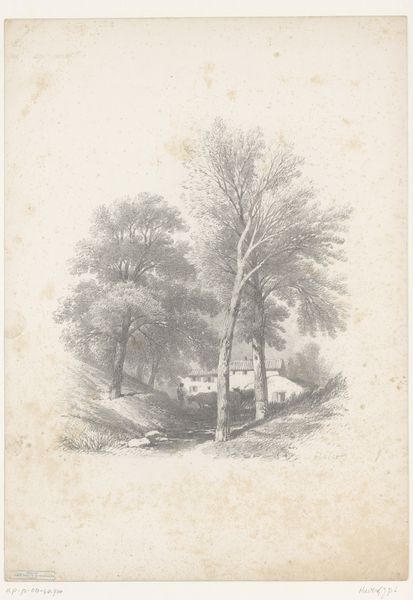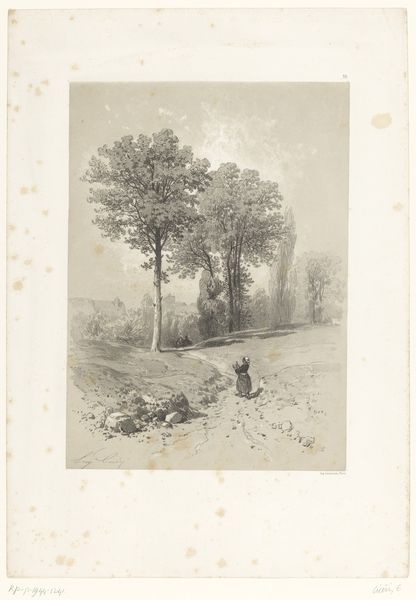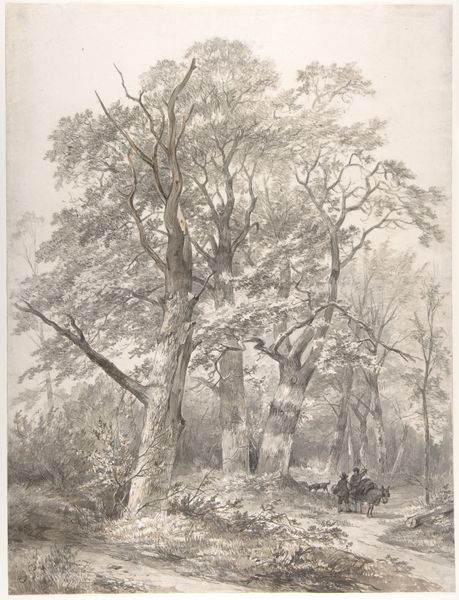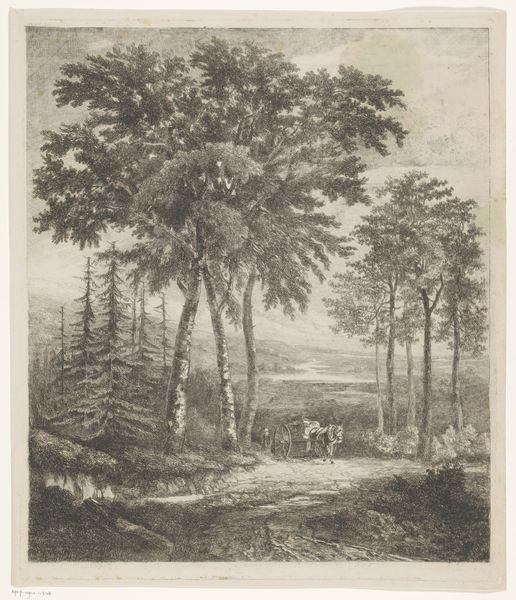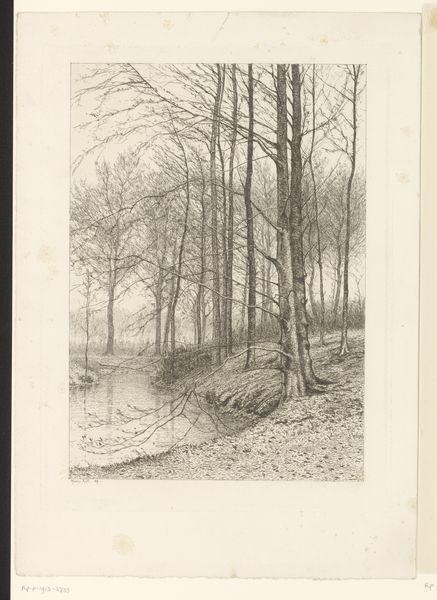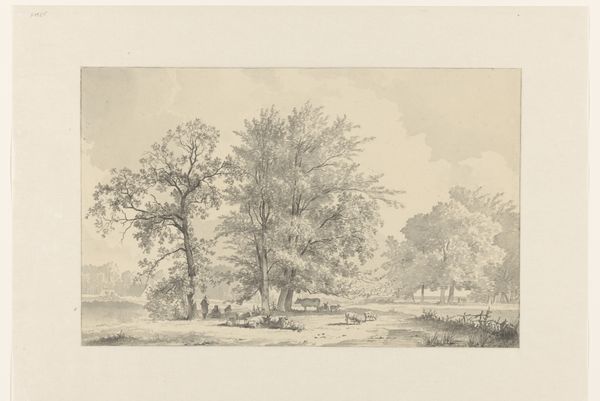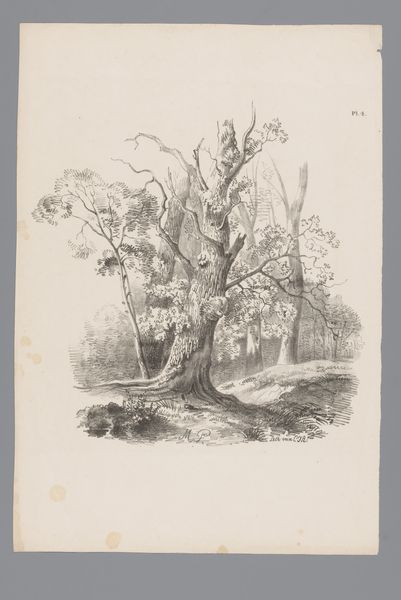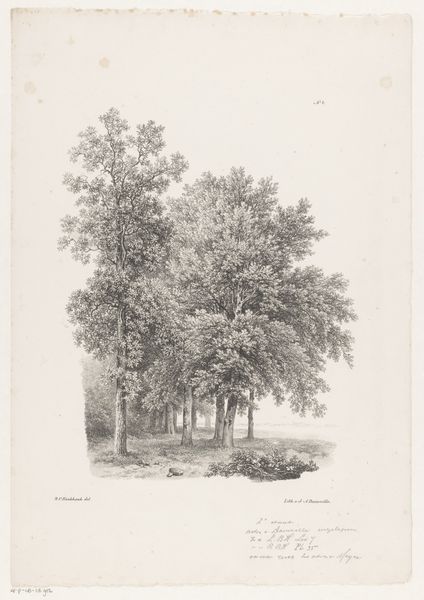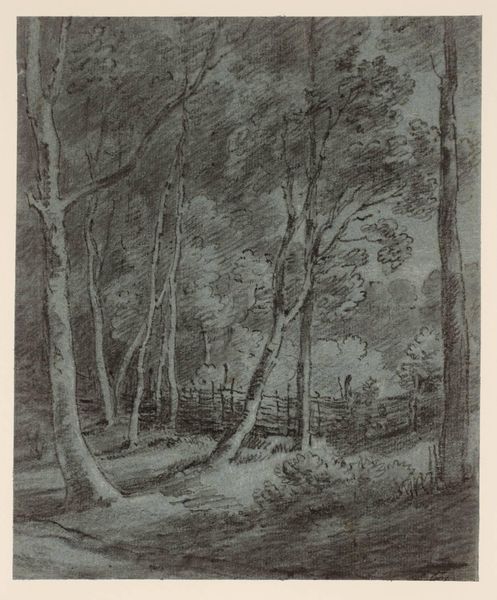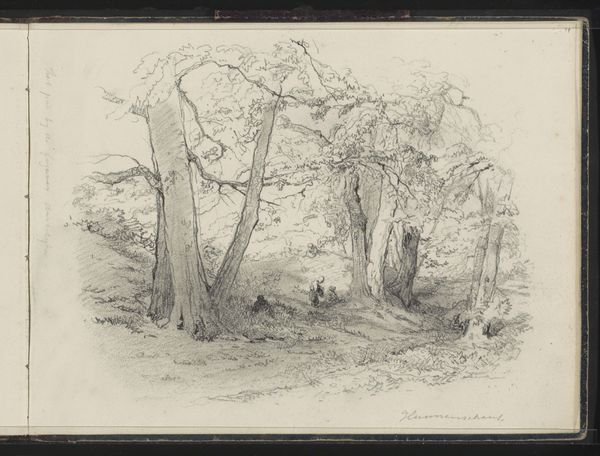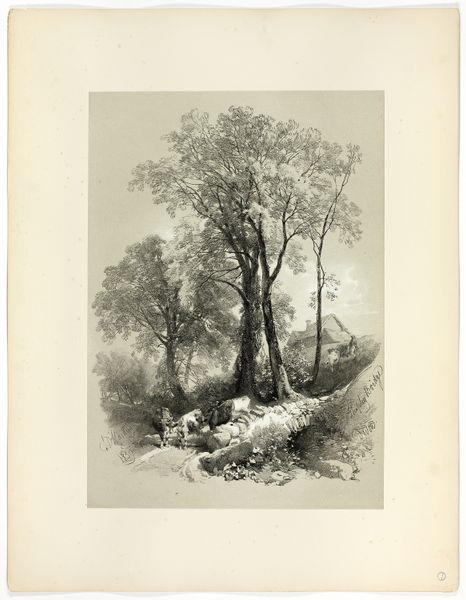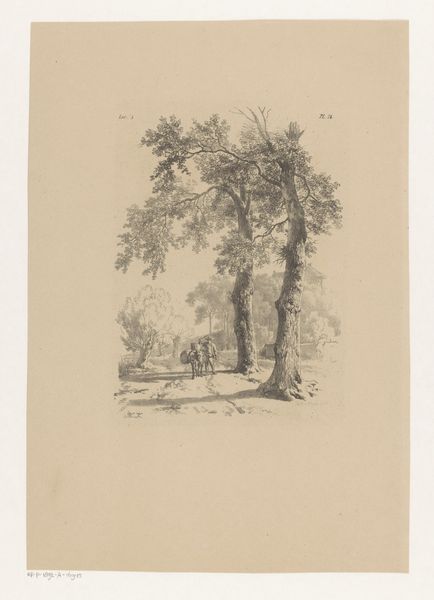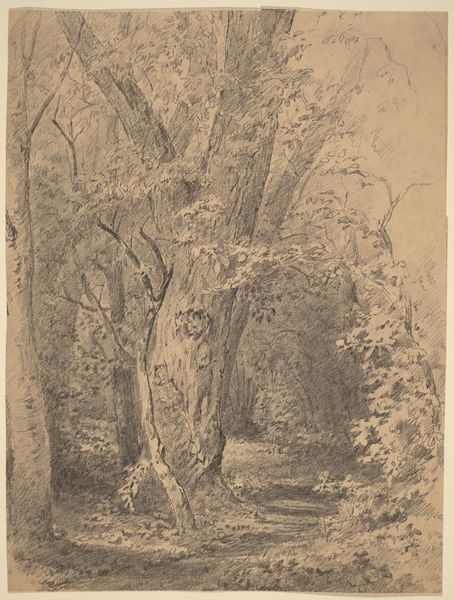
drawing, paper, engraving
#
drawing
#
old engraving style
#
landscape
#
paper
#
forest
#
romanticism
#
nature environment
#
line
#
genre-painting
#
engraving
Dimensions: height 314 mm, width 240 mm
Copyright: Rijks Museum: Open Domain
Curator: Here we have "Two Figures Walking in a Forest," a piece by Cornelis Gerrit Verburgh, made sometime between 1812 and 1879. It's an engraving on paper. What's your first impression? Editor: Brooding. And a little claustrophobic, even though it's supposed to be a natural scene. The thick trees loom, and the figures seem so small, almost insignificant. Curator: Right. As an engraving, the lines themselves are the primary material. You see how the density of the lines creates texture and shadow? It’s all about the physical act of carving into the plate, the labor of reproducing the scene. What statements are made about society in allowing this level of skill to portray these kinds of landscapes? Editor: I’m wondering who these figures are meant to be. Are they merely incidental, just adding scale to the landscape? Or do they represent something more profound about humanity's place within, and relationship to, nature? The romantic era was one of massive colonial expansion which puts them, and us the viewer, in a position of power of naming nature as subject of this artwork. Curator: I appreciate you going there. The artist clearly prioritizes technique—the ability to render light and shadow with such precision through the repetitive act of engraving. Are these skills a means for liberation or exploitation? Think about how the printing press amplified ideas across socioeconomic boundaries during this period. It gives even the poor an avenue to consider leisure. Editor: It does invite reflection, particularly on issues of access. How many could actually experience such landscapes firsthand, versus how many experienced them solely through images like these? Further, in a world of limited resources and clear social hierarchy it brings up the issues surrounding who gets to enjoy nature. It becomes an overtly political position to highlight the possibility for such activity and exploration. Curator: An interesting lens, and in the end perhaps this very small engraving can create a far larger discussion. Editor: Indeed. By interrogating these layers, we can understand both the intention and potential impact of the work with even greater nuance.
Comments
No comments
Be the first to comment and join the conversation on the ultimate creative platform.
